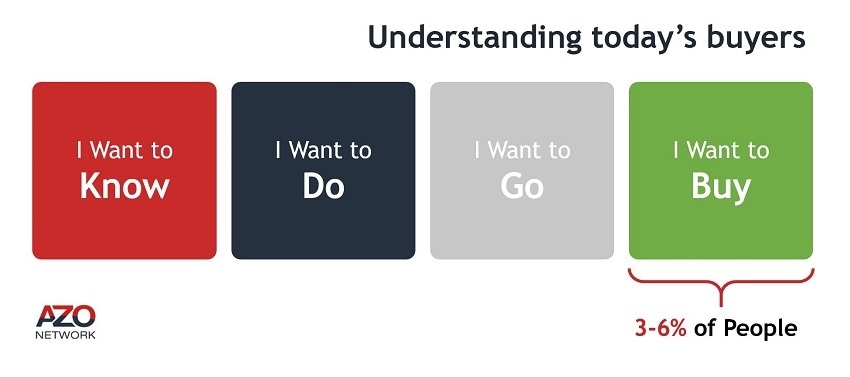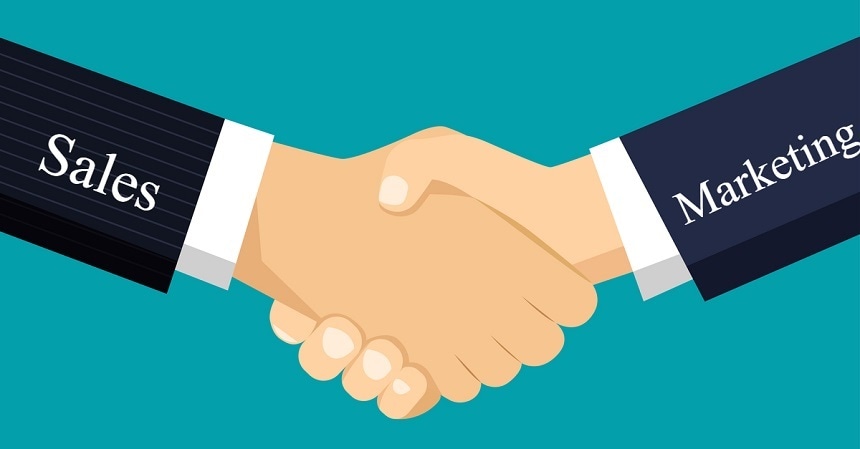
By Jason Cahill - Sales Advisor to InsideScientific
Ever heard of the phrase ‘the map is not the territory’? When looking at a map you can tell where the roads are, the terrain and elevation, names of buildings etc... that’s Marketing holding the map. But Sales are the folks on the ground reporting what the people who live there are like, where they work, what they like to do for fun. You can’t tell that from a road map, and that’s why you need both levels of information to be successful.
How does the Life Sciences industry compare to other industries which you’ve worked in?
It’s actually very comparable to almost every industry I’ve worked in from an analytical point of view: Large, medium, and a lot of small businesses all with varying beliefs in the value of technology to grow their market shares, and the same personas like the conservative CFO, the pragmatist CEO, and especially in Life Sciences the liberal and idealistic VP of Marketing.

From what have observed in Life Sciences, the companies who “get” the value of adopting new approaches to Marketing and Sales tend to be lopsided on the larger businesses side. A lot of smaller and even medium sized companies are still clinging to the tactics they used pre-smartphones, not investing in technology outside of their own products to grow their business. But if I’m blunt, it’s a generational thing. I equate it to millennials struggling with trying to convince their parents to use more technology; sometimes they just don’t get it and never will. A lot of those laggard companies will eventually jump on the steamroller or become part of the road.
How has your approach to selling changed over the course of your career?
I began as any Salesperson would, by listening to the most Senior Sales staff and adopting their tactics to sell. When my leadership suggested to ‘just make more dials’ or ‘write handwritten letters’ to increase my sales I knew I had to break out on my own and start experimenting with new tactics and strategies that were authentic to me. I left a big corporation to join a small business which was more liberal to new Sales ideas, and I became a sponge for knowledge, mostly to do with Psychology. I figured that I deal with humans every day, I should learn how we think, learn, and act in everyday situations.

I read a ton of blogs, books, videos, went to public speaking engagements, anything to learn more about how we behave with a focus on Sales situations. I started to notice patterns that were universal across various geographies, industries, personas and began to formulate my approach in an authentic way. It’s been very successful for me, and I thought I’d share my knowledge with others.
How has the customer’s buying process evolved in that time?
The pendulum has swung from walking into a brick and mortar building and shopping/being sold to 53% of the buyers’ journey being completed online before they ever speak to a person. To be honest from a human psychological side, I believe that we have always wanted to do our own research or form opinions on our own before purchasing long before Google and the internet, but there just wasn’t enough free information available. We trust ourselves, our own research, our gut feelings, more than a stranger whose sole purpose is to close a deal.
The key to success for Sales and Marketing now is to identify where the buyers journey begins, usually online, and figure out how to incept the idea that your product or service is inevitably the end of that journey.
How important is data and analytics to the modern day sales professional?
Well I’m a data nerd, the more information the better. Mainly because I love the challenge of analyzing, strategizing, and executing the perfect Sale. We also have to recognize that there are more businesses globally that are able to become your competition and mow your grass for you (sales term: sell your customers in your own geography), so you need every advantage available to close the deal.
A CRM is a Salesperson's best friend, it tells you everything about your prospects and customers.
A CRM is a Salesperson's best friend, it tells you everything about your prospects and customers. You can document people and their personas, companies and their current products (maybe it’s your competitors account), and help manage sales cycles from discovery to close. What’s been becoming more important is the data Sales can glean from Marketing, through campaigns and gathering analytics. Which web pages your prospect clicked on, which e-book they downloaded, which webinar they attended or video they watched and for how long; these are incredible insights a Salesperson can have in their toolbox to start forming their strategy on building a relationship with their list of accounts.

All of the above interactions are "salesperson free", which again makes the prospect feel more in control. If you don’t have data on your prospects and customers, you may as well just open a phonebook (if you can find one), and ‘smile and dial’ to find a pay cheque.
When hiring for a new sales person in 2020, which skills should a scientific organisation look for?
Someone who is authentic, has a good grasp of technology, and are adaptable. I say adaptable because there are a lot of Salespeople who learn how to sell in one industry one way and can’t break out of that routine. A phrase I like to use in Sales is ‘if a communication is predictable, it’s automatically discounted’. This means that if you keep using the same tactic to sell, people will identify it right away and start ignoring you. Think of a phone call when you’ve heard ‘Hi ____ my name is _____’ you immediately go into fight or flight mode because you recognize this as a Sales call.

Technology changes daily and you have to be able to adapt. Authenticity is a big one today as well, with so many scripted Sales interactions, a fundamental flaw in Salespeople is they aren’t taught to treat people as people first, and not just a sale. Communicate in a way that’s natural to you, say things in a tone and cadence as you would your friends or family, even the vernacular. You’re trying to discover if your prospects are part of your tribe, if they believe in things you believe (like better Marketing). It’s much easier to get a sale by solving a problem and communicating effectively, than trying to remember the steps from Spin Selling.
What are the most common mistakes which you see Sales and Marketing leaders making in their approaches?
Not being adaptable. Both have been changed dramatically in a very short period of time with smartphones and the internet that many companies have senior people who got their titles and their experience before the recent evolution in technology, so their decisions and strategies are based on their past.
From 2000 to today Major Google Algorithm Updates have changed almost 9 times per day, imagine trying to keep up with what people want and how to effectively communicate with them to sell your product.
Now imagine you haven’t carried a bag (been in a sales position) since 1996. Being adaptable to new tech and new strategies, almost daily, is something I find most companies find hard to take. It doesn’t have to be massive sweeping change internally, just small adjustments, like how a pilot makes course corrections constantly to get from one place to the next.
How do you address the 97% of leads who aren’t ready to buy yet?
In my experience, this is actually more 3-6% of my prospects are in a sales cycle right now. I’ve done this calculation many times and it’s usually falling between these numbers. If you want to be successful, make sure your opportunities are hovering around the 6% mark. But ultimately this study is a gift for Salespeople, it suggests that for those old-school Sales Managers who just tell their teams to pound phones that 97% of their calls are a waste if you’re simply trying to ‘get a meeting’. I started off in Sales as this guy, and would utterly fall apart at the end of the day trying to think of why I got so many "nos" compared to the "yes’". Over the years I realized I shouldn’t look to get a yes or a no from a cold call, but to take those answers off the table; and keep them engaged with my company/brand until they are ready to buy.

Really what you want to do is build a relationship with your accounts, it’s not about if they will meet this week or month or not, it’s about connection. Get your prospects to attend a webinar, download and e-book, invite them to industry events, anything to keep them engaged while the Sales team is spending more time managing the 3% and winning deals.

This is where Marketing comes in to shine, it’s not only their job to find new names, but also to keep leads warm. The handshake between Sales and Marketing has never been stronger than today, it’s a competitive landscape and they both have the same goal: to win customers. If Marketing comes up with content (webinar, downloadable content, etc.) and sends it out via email, Sales can then use the content as a reason to call the prospect and direct them towards the content and suggests a sync up after. If the prospect is part of the 3%, they’ll tell you, you don’t have to ask. If they aren’t, then round and round they go in the Sales/Marketing content loop until they are. It’s a simple concept, but the execution is where you need the experts.
Bottom line is that you need content: you need Marketing to create that content and you need Sales to support the content; SMarketing at it’s best right there.
Ask about webinar strategy
InsideScientific are the AZoNetwork strategic webinar partner of choice assisting in the strategy, planning, promotion, and project management of webinar projects of all sizes. To find out more about how we can assist in your webinar strategy, simply contact us today.